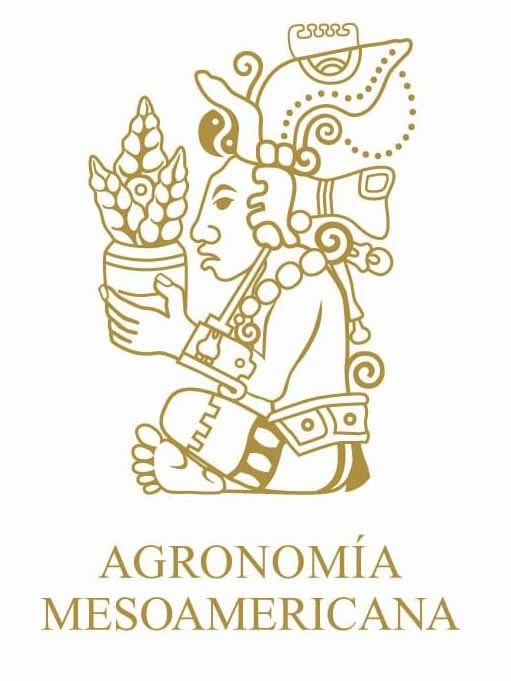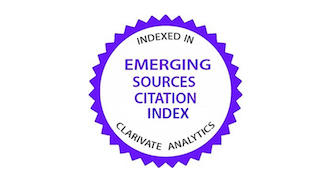Efecto repelente de aceites esenciales sobre el ácaro Tetranychus urticae Koch (Acari: Tetranychidae)ae)
DOI:
https://doi.org/10.15517/qwj4k754Palabras clave:
MIP ácaros, arañitas rojas, metabolitos secundarios, fitoprotecciónResumen
Introducción. Diversos extractos de plantas son empleados a nivel agrícola para disminuir el impacto en plagas artrópodas. Sin embargo, existen pocos trabajos que indiquen la acción tóxica o repelente de los aceites esenciales de canela, citronela y jengibre sobre poblaciones de ácaros fitófagos, como es el caso de Tetranychus urticae. Objetivo. Evaluar el efecto repelente de los aceites esenciales de grado comercial de canela (Cinnamomum zeylanicum), citronela (Cymbopogon winterianus) y el jengibre (Zingiber officinale), sobre una población del ácaro Tetranychus urticae en plantas de chile dulce (Capsicum annuum) bajo condiciones in vitro. Materiales y métodos. La investigación se realizó en el Laboratorio de Acarología del Centro de Investigaciones en Protección de Cultivos (CIPROC) de la Escuela de Agronomía, Universidad de Costa Rica, San Pedro de Montes de Oca entre octubre y noviembre del año 2023. Se probaron cuatro concentraciones (1 %, 2 %, 3 % y 4 %) de cada aceite (canela, citronela y jengibre), a un volumen de 333 µL por hoja, se cuantificó su efecto repelente por medio de un ensayo de pruebas de elección con el uso de puentes de papel. Las evaluaciones se realizaron 24 y 48 horas posterior a la aplicación. El diseño experimental fue un diseño aleatorio de bloques completos. El análisis de datos se realizó mediante un Modelo Lineal Generalizado. Resultados. Los tres aceites y sus respectivas concentraciones mostraron una acción repelente mayor al 60 % a excepción del aceite de citronela al 2 %. Una alta concentración no siempre correspondió con una mayor repelencia contra los ácaros, aunque esto varió de acuerdo con el aceite utilizado. Conclusión. Esta investigación expuso que tanto el aceite de canela como el de citronela y jengibre tienen propiedades repelentes contra Tetranychus urticae, lo que demuestra su potencial como alternativa para el manejo de esta plaga.
Referencias
Adesanya, A. W., Lavine, M. D., Moural, T. W., Lavine L. C., Zhu, F., & Walsh, D. B. (2021). Mechanisms and management of acaricide resistance for Tetranychus urticae in agroecosystems. Journal of Pest Science, 94, 639-663. https://doi.org/10.1007/s10340-021-01342-x
AdeyeOluwa, T.E. (2023). Essential oil of ginger: Effect of cultivation and uses. In P. Kaushik, & R. S. Ahmad (Eds.), Ginger – Cultivation and use. IntechOpen. https://doi.org/10.5772/intechopen.106682
An, H., & Tak, J. H. (2022). Miticidal and repellent activity of thirty essential oils and their synergistic interaction with vanillin against Tetranychus urticae Koch (Acari: Tetranychidae). Industrial Crops and Products, 182, Article 114872. https://doi.org/10.1016/j.indcrop.2022.114872
Ata, M. M. I., El Shahawy, G. Z., Fawzy, M. H., Abdel Baki, A. A. S., Al Quraishy, S., Hassan, A. O., & Abdel Tawab, H. (2023). Bioefficacy of essential oils emulsion and predatory mite, Euseius scutalis (Athias-Henriot) (Acari: Phytoseiidae) for the management of citrus brown mite, Eutetranychus orientalis (Klein) (Acari: Tetranychidae). Journal of King Saud University-Science, 35(2), Article 102471. https://doi.org/10.1016/j.jksus.2022.102471
Attia, S., Grissa, K. L., Mailleux, A. C., Lognay, G., Heuskin, S., Mayoufi, S., & Hance, T. (2011). Effective concentrations of garlic distillate (Allium sativum) for the control of Tetranychus urticae (Tetranychidae). Journal of Applied Entomology, 136(4), 302-312. https://doi.org/10.1111/j.1439-0418.2011.01640.x
Attia, S., Grissa, K. L., Lognay, G., Bitume, E., Hance, T., & Mailleux, A. C. (2013). A review of the major biological approaches to control the worldwide pest Tetranychus urticae (Acari: Tetranychidae) with special reference to natural pesticides: Biological approaches to control Tetranychus urticae. Journal of Pest Science, 86, 361-386. https://doi.org/10.1007/s10340-013-0503-0
Baker B. P., & Grant J. A. (2017). Cinnamon & Cinnamon Oil Profile. Cornell University Library. https://hdl.handle.net/1813/56117
Chaves, M. A. (2018). Registro de nuevos agroquímicos: limitante para la productividad y la competitividad de la agricultura y la agroindustria azucarera costarricense. LAICA-DIECA. https://servicios.laica.co.cr/laica-cv-biblioteca/index.php/Library/download/jYeBZrcaeneOgdpwrdMmOlfFNNVWZpCn
Choi, W. I., Lee, S. G., Park, H. M., & Ahn, Y. J. (2004). Toxicity of plant essential oils to Tetranychus urticae (Acari: Tetranychidae) and Phytoseiulus persimilis (Acari: Phytoseiidae). Journal of Economic Entomology, 97(2), 553-558. https://doi.org/10.1093/jee/97.2.553
da Camara, C. A., Akhtar, Y., Isman, M. B., Seffrin, R. C., & Born, F. S. (2015). Repellent activity of essential oils from two species of Citrus against Tetranychus urticae in the laboratory and greenhouse. Crop Protection, 74, 110-115. https://doi.org/10.1016/j.cropro.2015.04.014
da Silva, M. R. M., & Ricci-Júnior, E. (2020). An approach to natural insect repellent formulations: from basic research to technological development. Acta Tropica, 212. Article 105419. https://doi.org/10.1016/j.actatropica.2020.105419
dōTERRA. (s.f.). Aceite esencial de canela. Recuperado el 24 de octubre, 2024. https://www.doterra.com/US/es/p/cinnamon-bark-oil
dōTERRA. (s.f.). Aceite esencial de citronella. Recuperado el 24 de octubre, 2024. https://www.doterra.com/US/es/p/citronella-oil
dōTERRA. (s.f.). Aceite esencial de jengibre. Recuperado el 24 de octubre, 2024. https://www.doterra.com/MX/es_MX/p/ginger-oil
Garay, J., Brennan, T., & Bon, D. (2020). Review of essential oils: a viable pest control alternative. International Journal of Ecotoxicology and Ecobiology, 5(2), 13-22. https://doi.org/10.11648/J.IJEE.20200502.11
Herrera Gorocica, Á. M., Sánchez Contreras, M.A., Hernández Núñez, E., Ballina Gómez, H. S., Latourniere Moreno, L., & Ruiz Sánchez, E. (2023). Aceites esenciales para el manejo de Bemisia tabaci y Tetranychus urticae. Avances en investigación agropecuaria, 27, 14-15. https://doi.org/10.53897/RevAIA.23.27.14
Isman, M. B. (2000). Plant essential oils for pest and disease management. Crop protection, 19(8-10), 603-608. https://doi.org/10.1016/S0261-2194(00)00079-X
Kuang, C., Cao, J., Zhou, Y., Zhang, H., Wang, Y., & Zhou, J. (2023). Tick acetylcholinesterases mediate the repellent effect of cinnamaldehyde, a primary compound found in cinnamon oil. Ticks and Tick-borne Diseases, 15(6), Article 102404. https://doi.org/10.1016/j.ttbdis.2024.102404
Li, Hongli., Cui, Hongchun., Zheng, Xuxia., Yu, Jizhong., Mao, Yuxiao., Huang, Haitao. (2019). New application of cinnamon essential oil as agricultural acaricide.
López Marín, L. M. (2017). Manual técnico del cultivo del tomate (Solanum lycopersicum). Instituto Nacional de Innovación y Transferencia de Tecnología Agropecuaria. https://www.mag.go.cr/bibliotecavirtual/F01-10921.pdf
Martínez Huasanche, F., Rodríguez Maciel, J. C., Santillán Galicia, M. T., Lagunes Tejeda, Á., Rodríguez Martínez, D., Toledo Hernandez, R., Guzmán Franco, A. & Silva Aguayo, G. (2021). Rapid bioassay for detection of acaricide resistance in Tetranychus urticae (Acari: Tetranychidae). Journal of Entomological Science, 56(2), 246-255. https://doi.org/10.18474/0749-8004-56.2.246
Mendoza Léon, D., Dobronski Arcos, J., Vásquez Freytez, C., Frutos Pinto, V., & Paredes Carreño, S. (2019). Control de Tetranychus urticae Koch (Acari: Tetranychidae) con Bacillus subtilis en hojas de fresa (Fragaria vesca). Agronomía Costarricense, 43(1), 125-133. http://dx.doi.org/10.15517/rac.v43i1.35676.
Migeon, A., Nouguier, E., & Dorkeld, F. (2011). Spider Mites Web: a comprehensive database for the Tetranychidae. In M. Sabelis, & J. Bruin (Eds.), Trends in acarology (pp. 557-560). Springer, Dordrecht. https://doi.org/10.1007/978-90-481-9837-5_96
Mota Sánchez, D., & Wise J.bC. (2024). The Arthropod Pesticide Resistance Database. Michigan State University. Recuperado el 24 de octubre, 2024. http://www.pesticideresistance.org
Neira, C. M., Heinsohn P. P., Carrillo, Ll. R., Báez, M. A., & Fuentealba, A., J. (2004). Efecto de aceites esenciales de lavanda y laurel sobre el ácaro Varroa destructor Anderson & Truemann (Acari:Varroidae). Agricultura Técnica, 64(3),238-244. https://dx.doi.org/10.4067/S0365-28072004000300003
Patel, M., & Prajapati, B. G. (2024). Cinnamon oil. An insight into pharmacological and pharmaceutical potential. In S. Singh, P Kumar Chaurasia, & S. Lata Bharati (Eds.), Pharmacological aspects of essential oils. Current and future trends (pp. 162-174). CRC Press. https://doi.org/10.1201/9781003389774-12
Posit team (2024). RStudio: Integrated Development Environment for R. Posit Software. http://www.posit.co/
R Core Team (2024). R: A Language and Environment for Statistical Computing. R Foundation for Statistical Computing. https://www.R-project.org/
Regnault-Roger, C., Vincent, C., & Arnason, J. T. (2012). Essential oils in insect control: low-risk products in a high-stakes world. Annual Review of Entomology, 57(1), 405-424. https://doi.org/10.1146/annurev-ento-120710-100554
Santamaria, M. E., Arnaiz, A., Rosa-Diaz, I., González-Melendi, P., Romero-Hernandez, G., Ojeda-Martinez, D. A., Garcia, A., Contreras, E., Martinez, M., & Diaz, I. (2020). Plant defenses against Tetranychus urticae: mind the gaps. Plants, 9(4), Article 464. https://doi.org/10.3390/plants9040464
Servicio Fitosanitario del Estado. (s.f.). Sistema de Insumos y Fiscalización. Recuperado mayo 30, 2025 de https://app.sfe.go.cr/SFEInsumos/aspx/Seguridad/Home.aspx
Sharma, A., Shukla, A., Attri, K., Kumar, M., Kumar, P., Suttee, A., Singh, G., Barnwal, R. P., & Singla, N. (2020). Global trends in pesticides: A looming threat and viable alternatives. Ecotoxicology and Environmental Safety, 201. Article 110812. https://doi.org/10.1016/j.ecoenv.2020.110812
Sheasha, A., Hosny, A. E., Keratum, A., Abdelrhman, H., Al-Harbi, N. A., Al-Qahtani, S. M., & Abdelaal, K. (2023). Efficacy of some plant essential oils against two spotted spider mite Tetranychus urticae under laboratory conditions. Polish Journal of Environmental Studies, 32(4), 3291-3298. https://doi.org/10.15244/pjoes/162615
Tak, J. H., & Isman, M. B. (2017). Acaricidal and repellent activity of plant essential oil-derived terpenes and the effect of binary mixtures against Tetranychus urticae Koch (Acari: Tetranychidae). Industrial Crops and Products, 108, 786-792. https://doi.org/10.1016/j.indcrop.2017.08.003
Villegas Elizalde, S.E., Rodríguez Maciel, J.C., Anaya Rosales,S., Sánchez Arroyo, H., Hernández Morales, J., & Bujanos Muñóz R. (2010). Resistencia a acaricidas en Tetranychus urticae (Koch) asociada al cultivo de fresa en Zamora, Michoacán, México. Agrociencia 44, 75–81. https://agrociencia-colpos.org/index.php/agrociencia/article/view/777/777
Xu, D., He, Y., Zhang, Y., Xie, W., Wu, Q., & Wang, S. (2018). Status of pesticide resistance and associated mutations in the two-spotted spider mite, Tetranychus urticae, in China. Pesticide Biochemistry and Physiology, 150, 89-96. https://doi.org/10.1016/j.pestbp.2018.07.008
You, C. X., Zhang, W. J., Guo, S. S., Wang, C. F., Yang, K., Liang, J. Y., Wang, Y., Geng, Z. F., Du, S. S., & Deng, Z. W. (2015). Chemical composition of essential oils extracted from six Murraya species and their repellent activity against Tribolium castaneum. Industrial Crops and Products, 76, 681-687. https://doi.org/10.1016/j.indcrop.2015.07.044
Zhang, L., Teng, Q., Guo, J., Zou, M., Xue, Q., Zhao, J., & Li, Y. (2024). Efficacy and underlying mechanisms of the essential oil derived from Rosmarinus officinalis against Aleuroglyphus ovatus (Acari: Acaridae). International Journal of Acarology, 50(3), 209-221. https://doi.org/10.1080/01647954.2024.2311668
Descargas
Publicado
Licencia
Derechos de autor 2025 Manuel Quirós-Monge, Iván León-González, Pamela Murillo-Rojas (Autor/a)

Esta obra está bajo una licencia internacional Creative Commons Atribución-NoComercial-SinDerivadas 4.0.
1. Política propuesta para revistas de acceso abierto
Los autores/as que publiquen en esta revista aceptan las siguientes condiciones:
- Los autores/as conservan los derechos morales de autor y ceden a la revista el derecho de la primera publicación, con el trabajo registrado con la licencia de atribución, no comercial y sin obra derivada de Creative Commons, que permite a terceros utilizar lo publicado siempre que mencionen la autoría del trabajo y a la primera publicación en esta revista, no se puede hacer uso de la obra con propósitos comerciales y no se puede utilizar las publicaciones para remezclar, transformar o crear otra obra.
- Los autores/as pueden realizar otros acuerdos contractuales independientes y adicionales para la distribución no exclusiva de la versión del artículo publicado en esta revista (p. ej., incluirlo en un repositorio institucional o publicarlo en un libro) siempre que indiquen claramente que el trabajo se publicó por primera vez en esta revista.
- Se permite y recomienda a los autores/as a publicar su trabajo en Internet (por ejemplo en páginas institucionales o personales) antes y durante el proceso de revisión y publicación, ya que puede conducir a intercambios productivos y a una mayor y más rápida difusión del trabajo publicado (vea The Effect of Open Access).






























